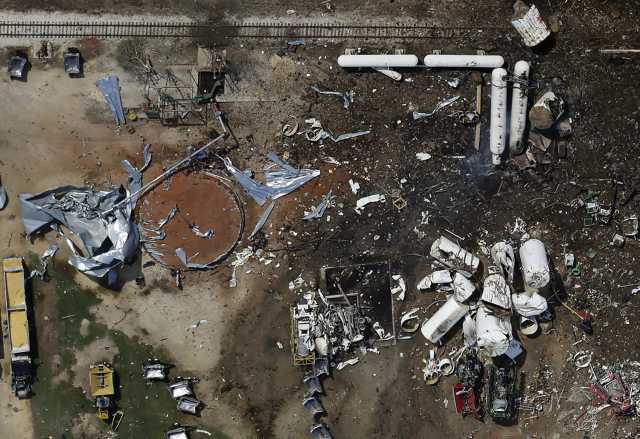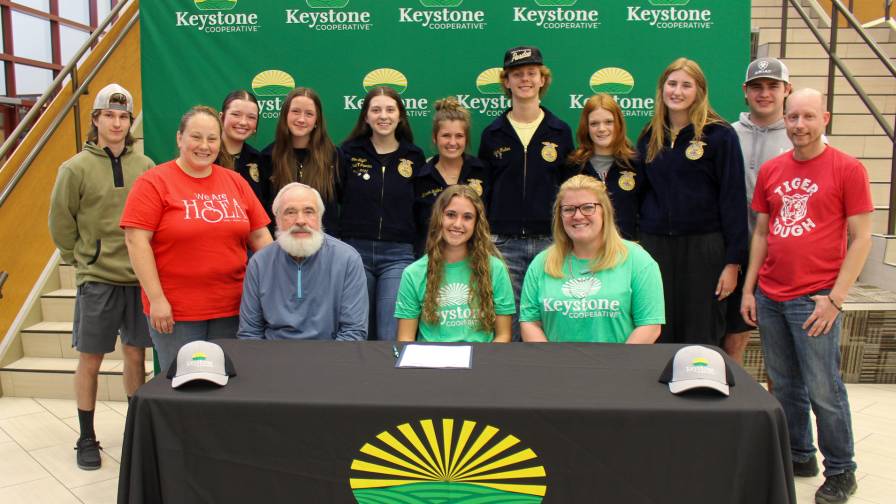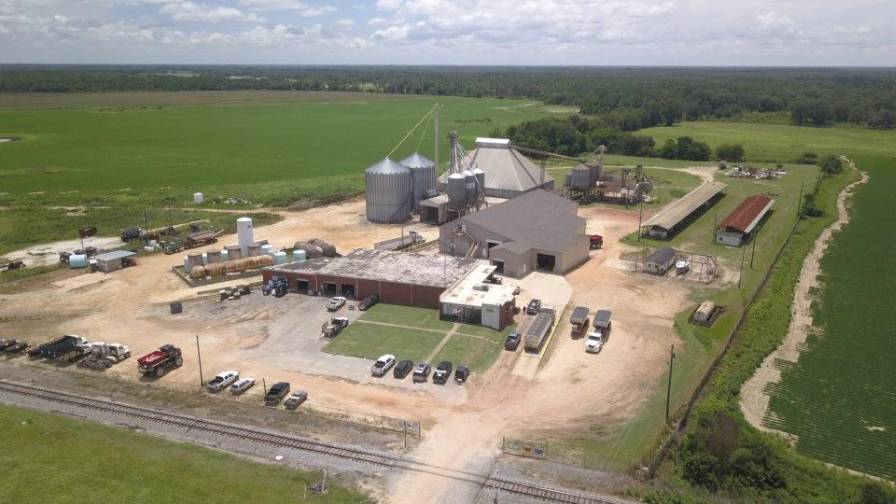CSB: West Fertilizer Tragedy The Result Of Owner Failure, Regulatory Shortcomings

Aerial view of the West Fertilizer explosion site
The U.S. Chemical Safety Board (CSB) released preliminary findings into the April 17, 2013, West Fertilizer explosion and fire in West, TX, which resulted in at least 14 fatalities, 226 injuries and widespread community damage. Large quantities of ammonium nitrate (AN) fertilizer exploded after being heated by a fire at the storage and distribution facility. The CSB’s investigation focuses on shortcomings in existing regulations, standards, and guidance at the federal, state and county level.
[Opinion: West Fertilizer Report Spreads The Blame Around]
The investigative team’s presentation will occur this evening at a public meeting in West, TX, at 5:30 pm CDT.
CSB Chairperson Rafael Moure-Eraso said, “The fire and explosion at West Fertilizer was preventable. It should never have occurred. It resulted from the failure of a company to take the necessary steps to avert a preventable fire and explosion and from the inability of federal, state and local regulatory agencies to identify a serious hazard and correct it.”
The CSB’s investigation found that at the state level, there is no fire code and in fact counties under a certain population are prohibited from having them. “Local authorities and specifically—local fire departments—need fire codes so they can hold industrial operators accountable for safe storage and handling of chemicals,” said Dr. Moure-Eraso.
CSB Supervisory Investigator Johnnie Banks said “The CSB found at all levels of government a failure to adopt codes to keep populated areas away from hazardous facilities, not just in West, TX. We found 1,351 facilities across the country that store ammonium nitrate. Farm communities are just starting to collect data on how close homes or schools are to AN storage, but there can be little doubt that West is not alone and that other communities should act to determine what hazards might exist in proximity.”
The CSB’s preliminary findings follow a yearlong investigation which has focused on learning how to prevent a similar accident from occurring in another community. “It is imperative that people learn from the tragedy at West,” Dr. Moure-Eraso said.
Check out the full report on CSB’s website.






